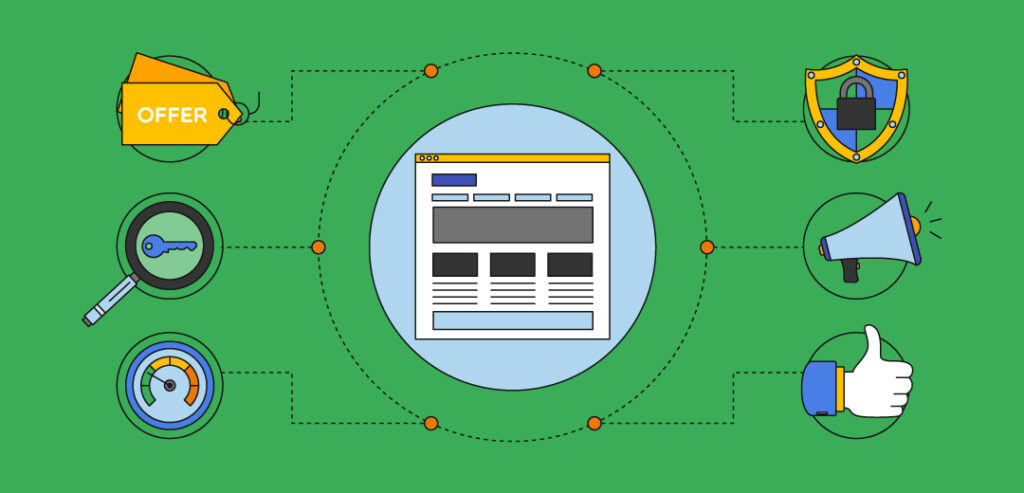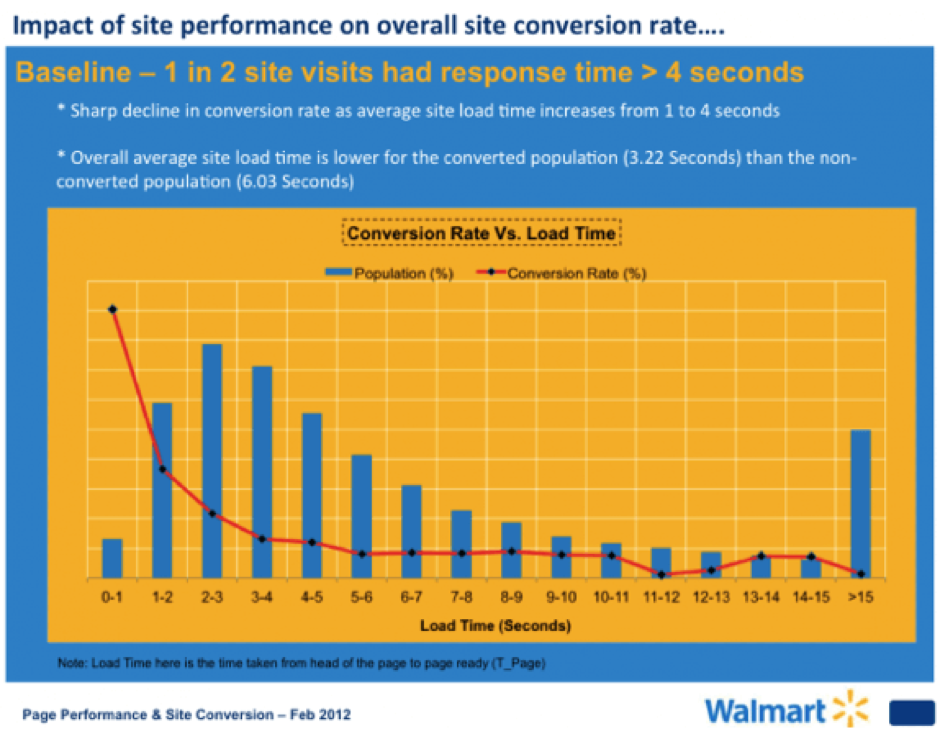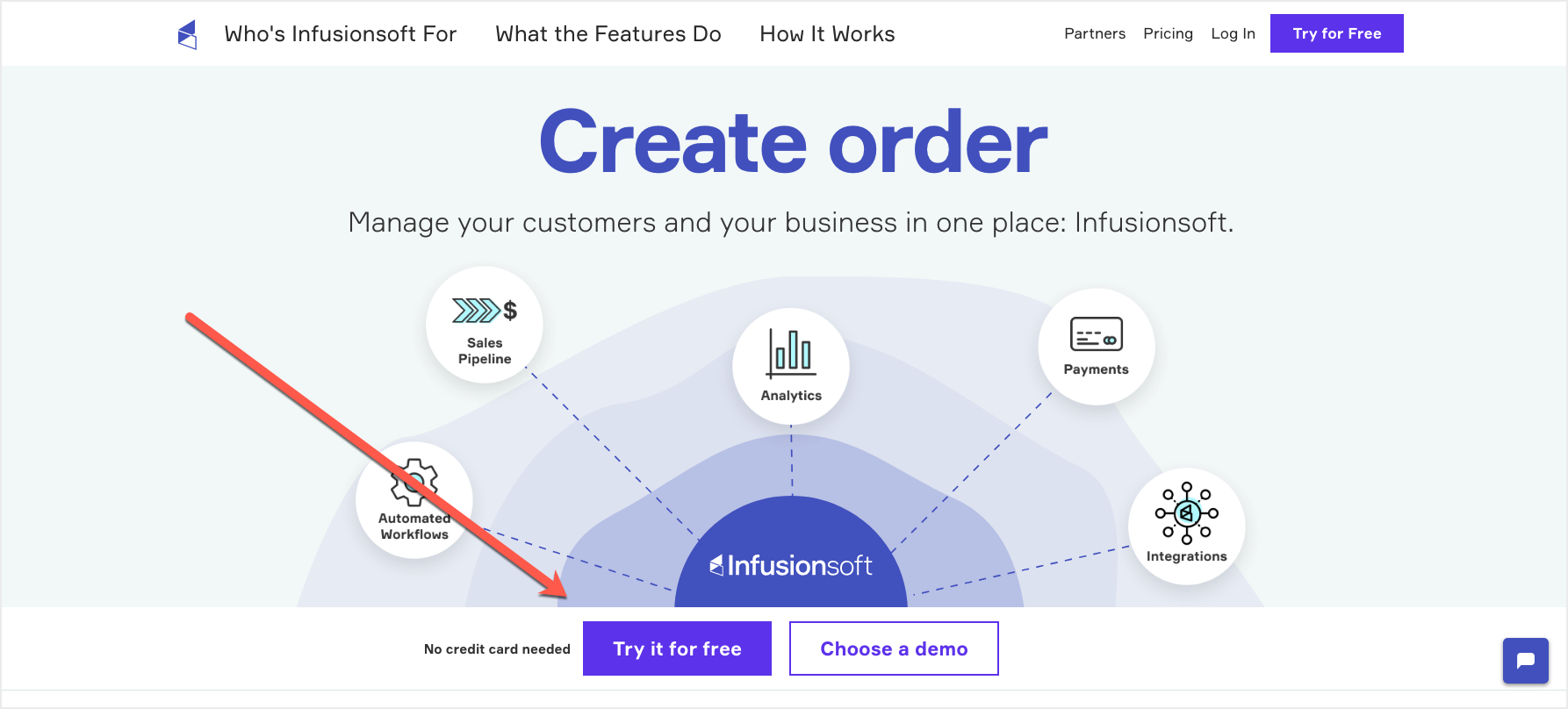Perhaps the most efficient (and cost-effective) way of improving your Return On Ad Spend (ROAS) is by optimizing this page. Its design, messaging, load speed, and a combination of other factors make it critical to the click-to-action journey for a prospect.
Put simply: if you want to keep your clients happy and sustain a low cost per conversion, your PPC landing page needs to be on point.
The good thing is, it’s not rocket science. In fact, all of the best PPC landing pages follow a similar recipe. And you don’t need to be a conversion expert to monitor and optimize these pages for better performance. A little bit of salt, pepper, and spice, and you’ll have yourself a winning combination that will see your clients singing your praises from the rooftops.
With that being said, there are six common mistakes we see agencies making time and time again with their landing pages. If you can avoid these mistakes you will pass the PPC landing page best practices test.
Do your clients’ landing pages pass this test? Or are they leaking money?
#1. The offer isn’t clearly communicated
the things discussed in this checklist will be irrelevant. The offer needs to make a promise in the ad, re-iterate that promise on the landing page, and deliver on that promise when someone takes action.
The offer will depend on your client and their business, industry, and documented goals. Some common PPC offers include free trials, shipping, an obligation-free consultation/quote for services, a product discount or extended warranty.
Below is an example of a free trial offer for a PPC optimization tool.
The search ad:

And the landing page:
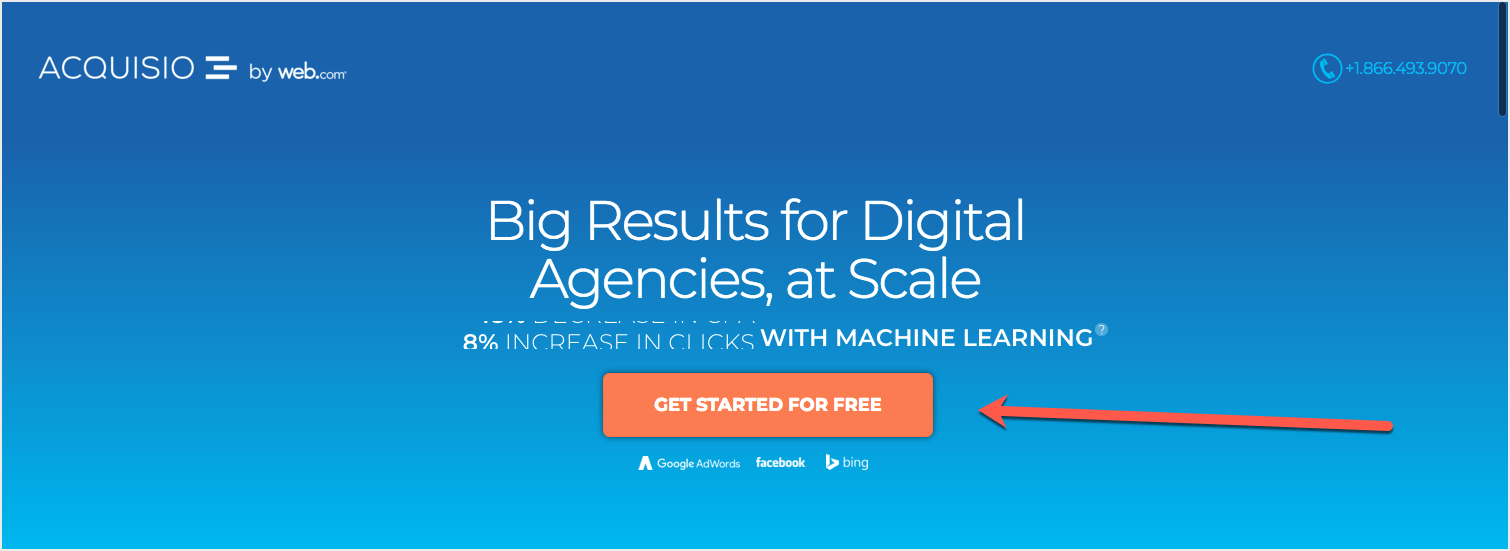
Of course, the offer itself is only as good as the copy that supports it, as well as the other elements discussed in this article.
#2. It’s not optimized for the campaign’s PPC keywords
You might be wondering… “Why do I need to optimize my PPC landing page for keywords? We’re not doing SEO!”
The primary reason why you should create alignment between the keywords you target in your PPC campaign, and the keywords your landing page is optimized for, is that it contributes to the relevancy of your campaign. Relevancy influences Ad Rank.
According to Google, Ad Rank is “A value that’s used to determine your ad position (where ads are shown on a page relative to other ads) and whether your ads will show at all. Ad Rank is calculated using your bid amount, your auction-time ad quality (including expected click-through rate, ad relevance and landing page experience), the Ad Rank thresholds, the context of the person’s search (for example, the person’s location, device, time of search, the nature of the search terms, the other ads and search results that show on the page, and other user signals and attributes), and the expected impact of extensions and other ad formats.”
The commentary in this description that is most important to recognize when it comes to your PPC campaign keywords is the “expected click-through rate,” “ad relevance,” “landing page experience,” and “the nature of the search terms”.
The long and short of it is… If a user searches for something, they want to see that something in the ad copy and on the landing page so that their desires are fulfilled.
Let’s look at an example of where this can go wrong… Say your client sells pool cleaning services, supplies, and other pool related products. A user searches for “pool cleaning services” and your PPC ad directs them to a generic page on your client’s website that promotes an array of different products and services. In this instance, yes they may be able to find what they need but you are making it hard for them. Instead, you should optimize this particular keyword search to be sent to a page that specifically talks about pool cleaning services. Otherwise, users will potentially leave the site and go back to search for what they need. If too many users don’t get what they need from your website, the relevancy and rank of your ad will decrease – pushing up the cost per lead of your campaign.
A great example of keyword relevancy can be seen with location-based searches such as the one below for “vacation rentals in san francisco” and the Airbnb landing page that it leads to:
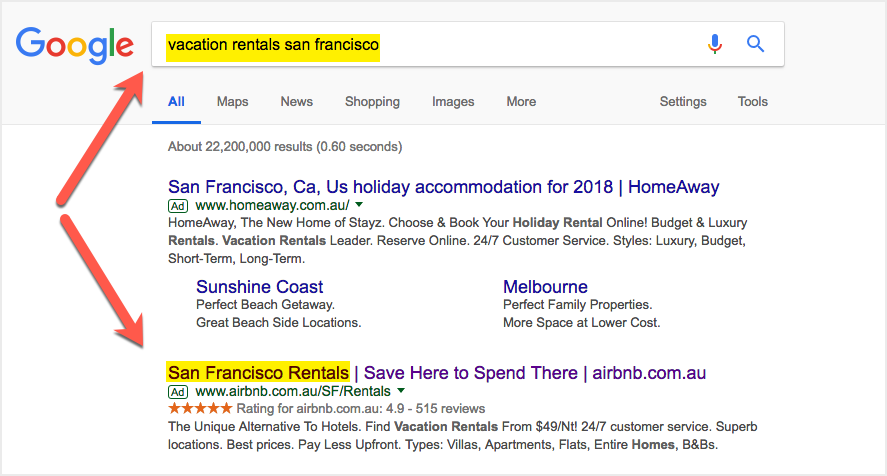
And the PPC landing page:
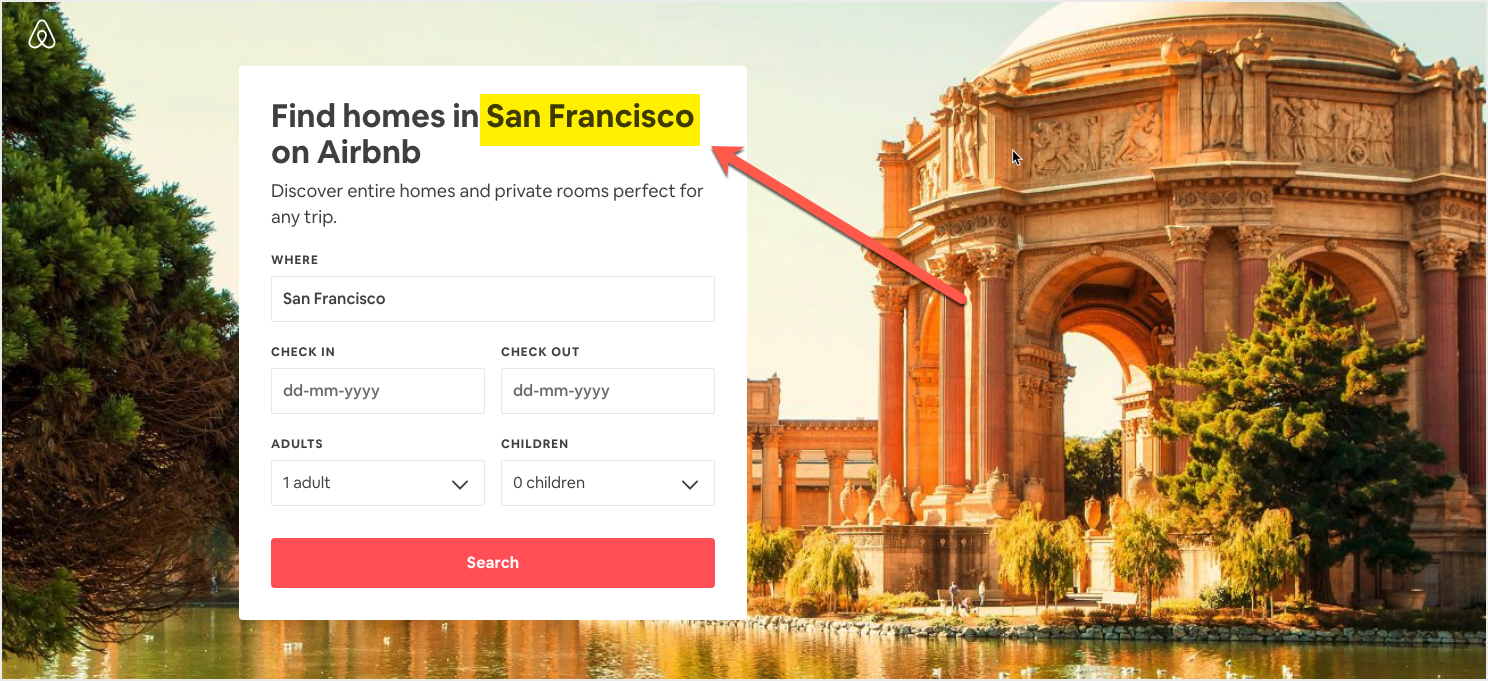
In sum, ensure your landing page is a natural extension from your campaign and includes keyword triggers that tell both Google and the prospect that they are in the right place.
#3. The site speed is lacking
Searchers are impatient and want things immediately. That’s why they have come to a search engine. It’s not like a Facebook ad campaign where you are interrupting people as they scroll through their newsfeed. Google Ads and other forms of paid search ads are direct-response style forms of advertising. Users are searching for solutions and the quicker you can provide them that solution the more chance of them taking the desired action.
- Use a landing page builder such as Unbounce or LeadPages which operate in a separate environment to your client’s website and are already optimized for performance. Or;
- Work with a developer who has the technical know-how to speed up your client’s website.
#4. There isn’t an SSL certificate installed
An SSL certificate is a set of files that enable a secure and encrypted connection between your website, the internet browser of the viewer, and your site’s servers. If you have one successfully installed on your website then you will see HTTPS:// in the browser address bar:
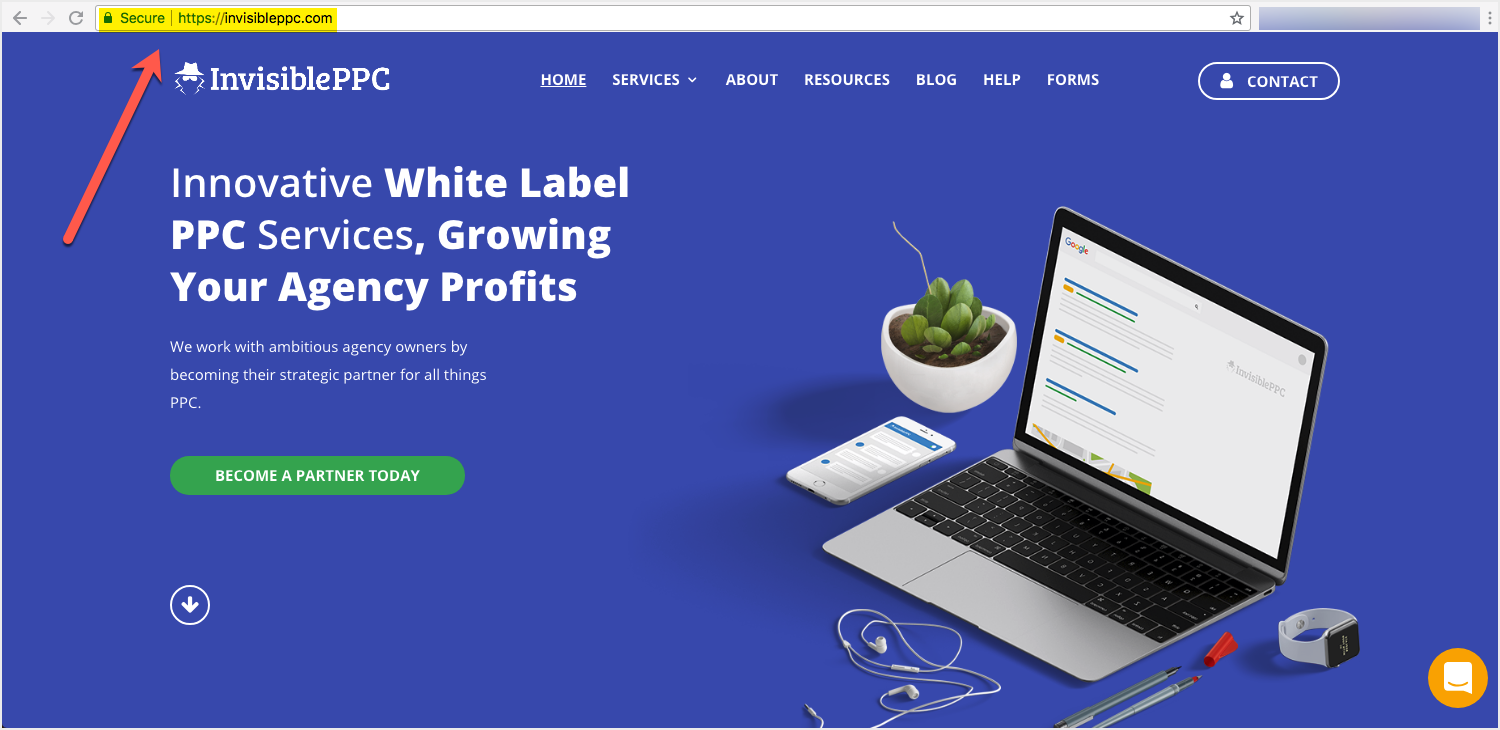
The good thing about SSL certificates is that they are fairly easy to install and affordable. If you have a developer on your team, they could have one up and running in less than an hour. Or, for the non-technical people out there, all the best web hosting companies provide SSL certificates and usually install them for you across the entire site.
Why do you need an SSL certificate?
This is just two of several signs that Google is moving towards HTTPS:// everywhere, and because they control a major chunk of the PPC market, you will need to comply or risk inflating your clients’ PPC costs and campaign performance.
#5. The call-to-action (CTA) is unclear or non-existent
Humans are, for the most part, easily distracted. One second we could be looking for a new set of speakers via a Google search, and a handful of clicks later we’re watching a 2-hour YouTube video about Kanye West. At this point, we’ve completely forgotten about those speakers we wanted, and the click we made on a search ad has not resulted in a direct conversion.
Your landing page needs to be designed with one singular call-to-action in mind so that there is no confusion about what a visitor should do when they navigate to this page, and no way they will get distracted and click away to a Kanye West video just before you close the deal.
Reducing the number of decisions someone needs to make and aligning your ad copy, landing page messaging, and website design to focus on a single call-to-action increase the chance of someone taking the bait.
Here are a few things to consider when designing your call-to-action:
- Use a consistent call-to-action across all channels of the campaign. For example, if you promise something in a search ad, deliver on that promise with your landing page.
- Include your call-to-action in the top half of your landing page (above the fold) so that it’s immediately obvious what a visitor should do. For example, Infusionsoft uses a floating bar on the bottom of their landing page to make sure the call-to-action is always above the fold and visible to a viewer:
- For those who don’t click on the first call-to-action, provide multiple opportunities further down the page that will entice more people to click and take action.
- Use clear and descriptive phrases on your call-to-action buttons to encourage action, rather than generic text such as “Buy Now” or “Inquire”. See an example of this from LeadPages where they use the text “Start My Free Trial”:
#6. It’s missing social proof
Social proof; in the form of testimonials, respected brand logos, reviews, ratings, and case studies, is an effective way to bridge this trust gap on your PPC landing page. Instead of hearing how fantastic your business is from your copywriters and sales team the prospective buyer is reading about other customer’s experience. They can then see themselves in their shoes and visualize becoming a customer.
Marketing automation platform ActiveCampaign uses several forms of social proof to woo potential customers that have come from their search campaign.
Above the fold, they include positive product ratings from respected review site G2Crowd:
And then they include customer testimonials further down the landing page to reinforce the social proof:
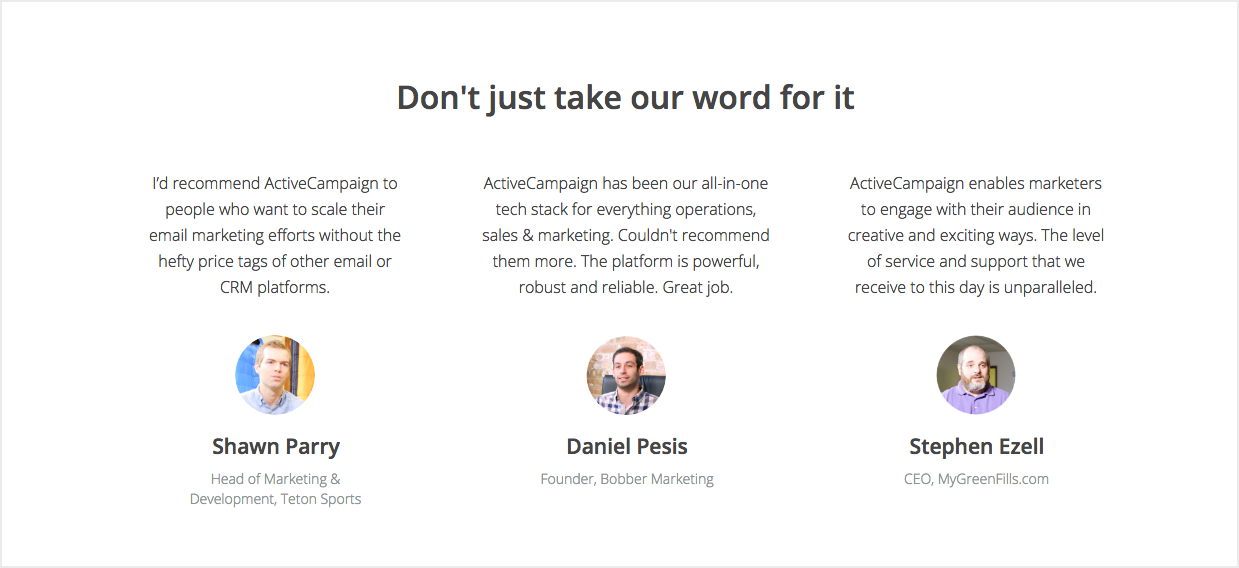
The social proof you use on your landing page doesn’t have to be elaborate, but without it, you will find it hard to close as much business as you’d like to.

